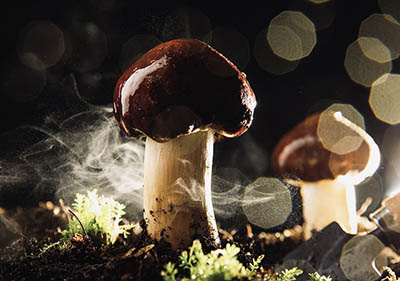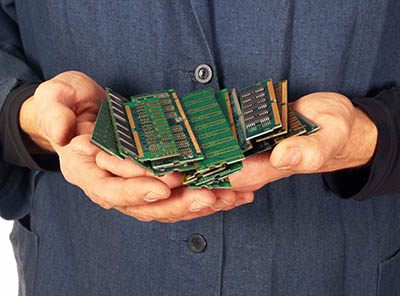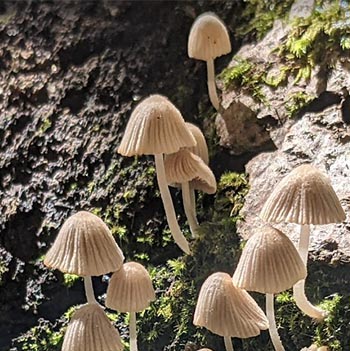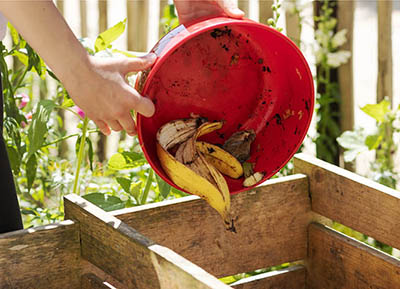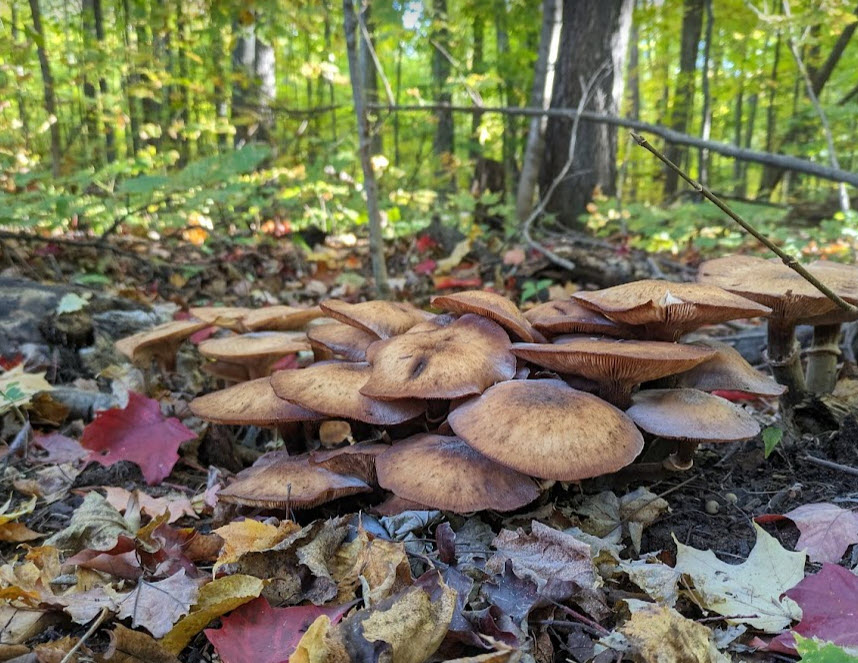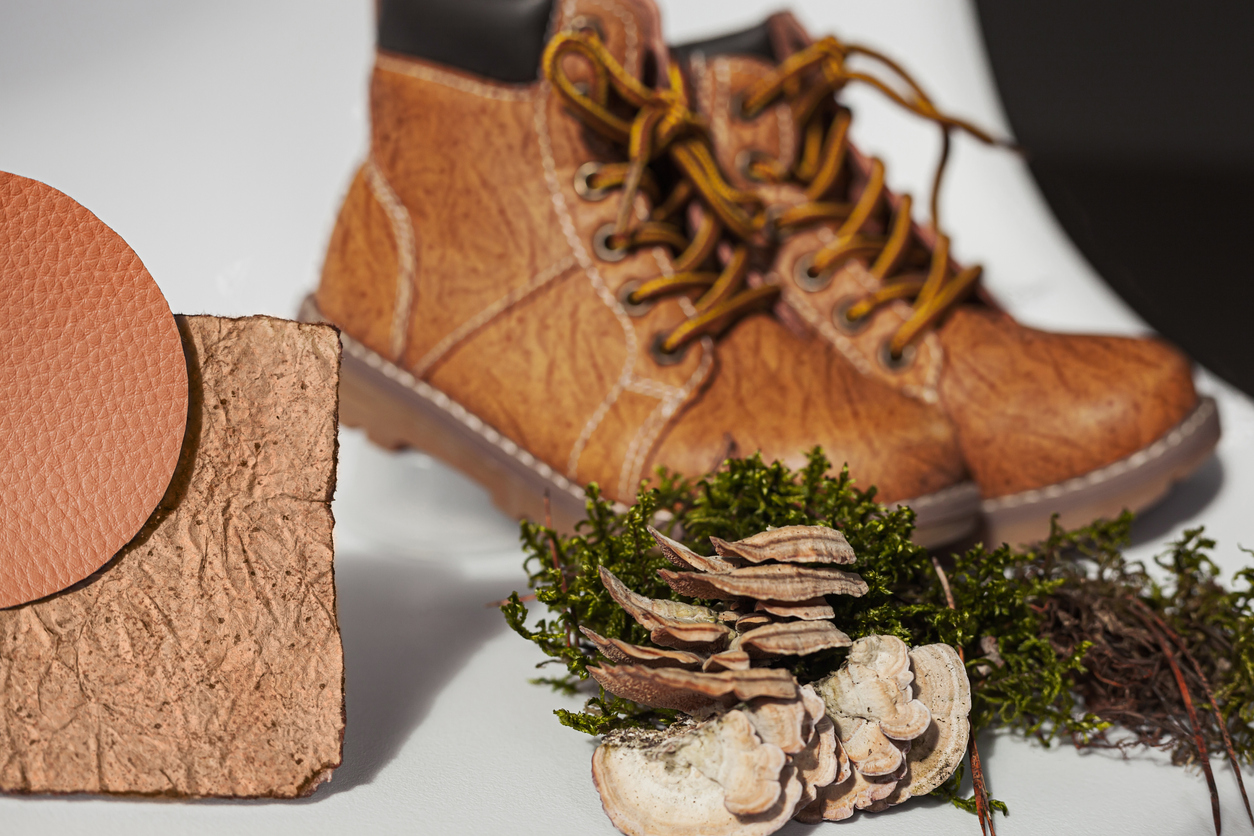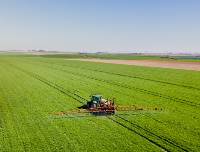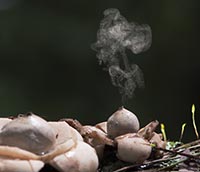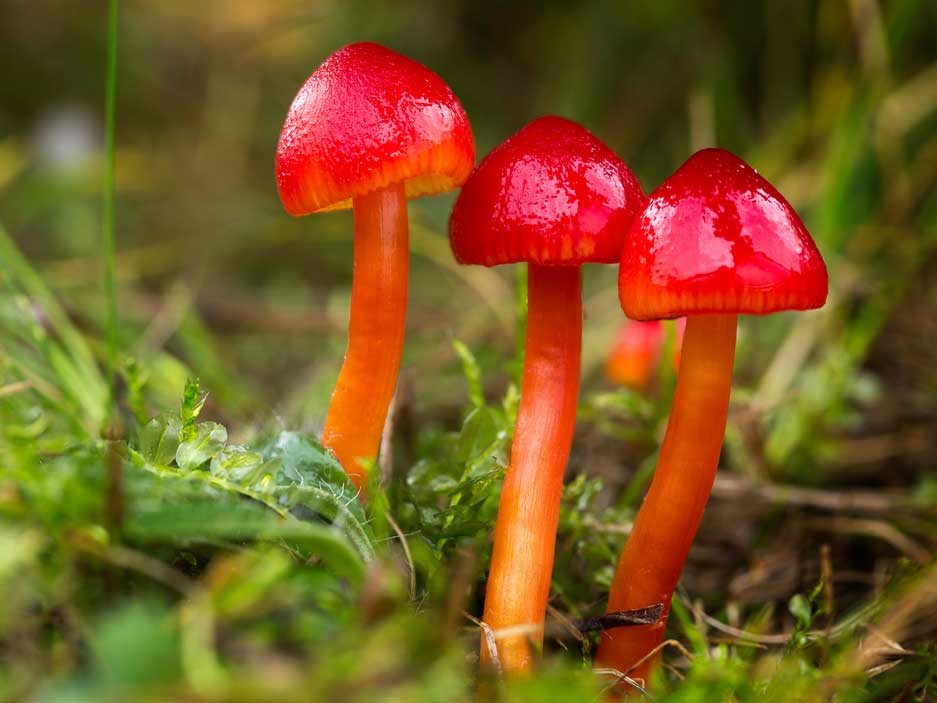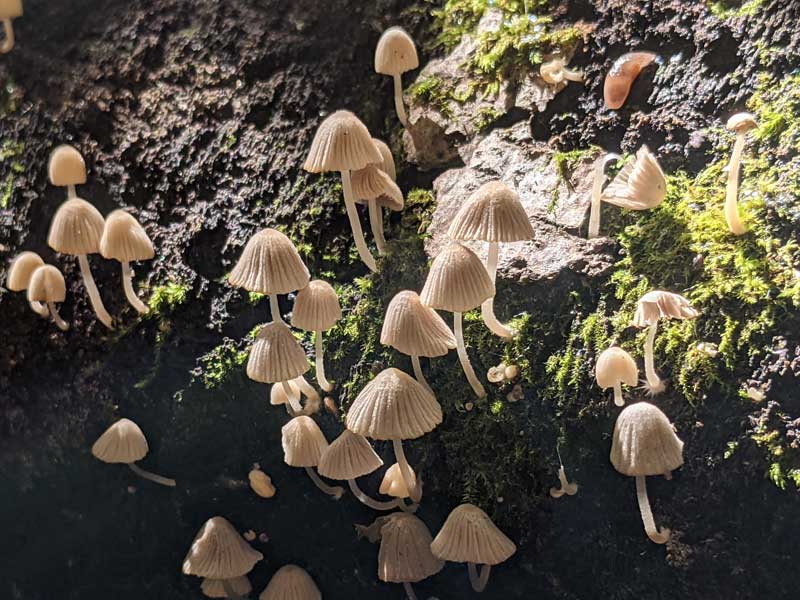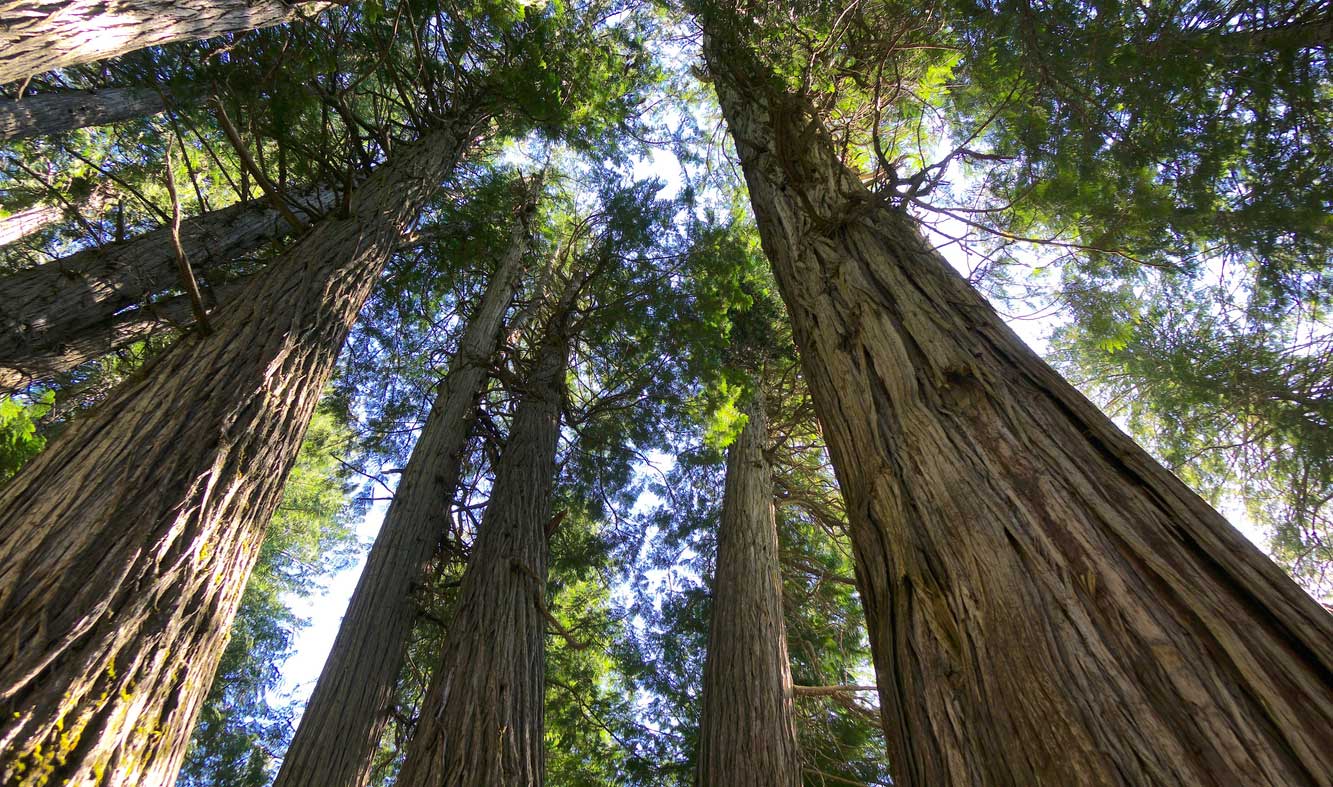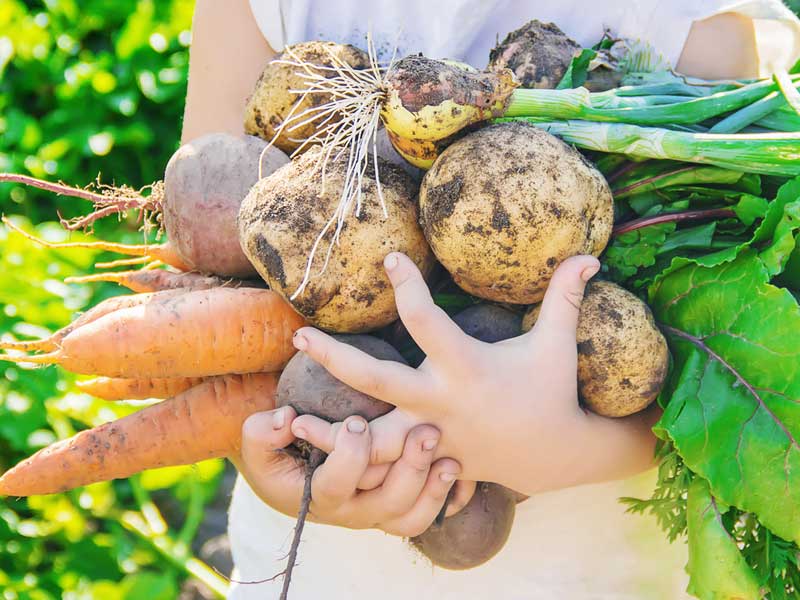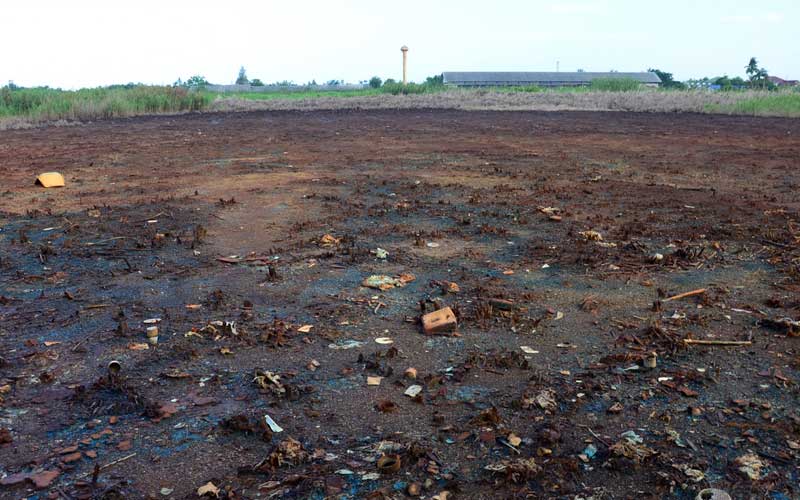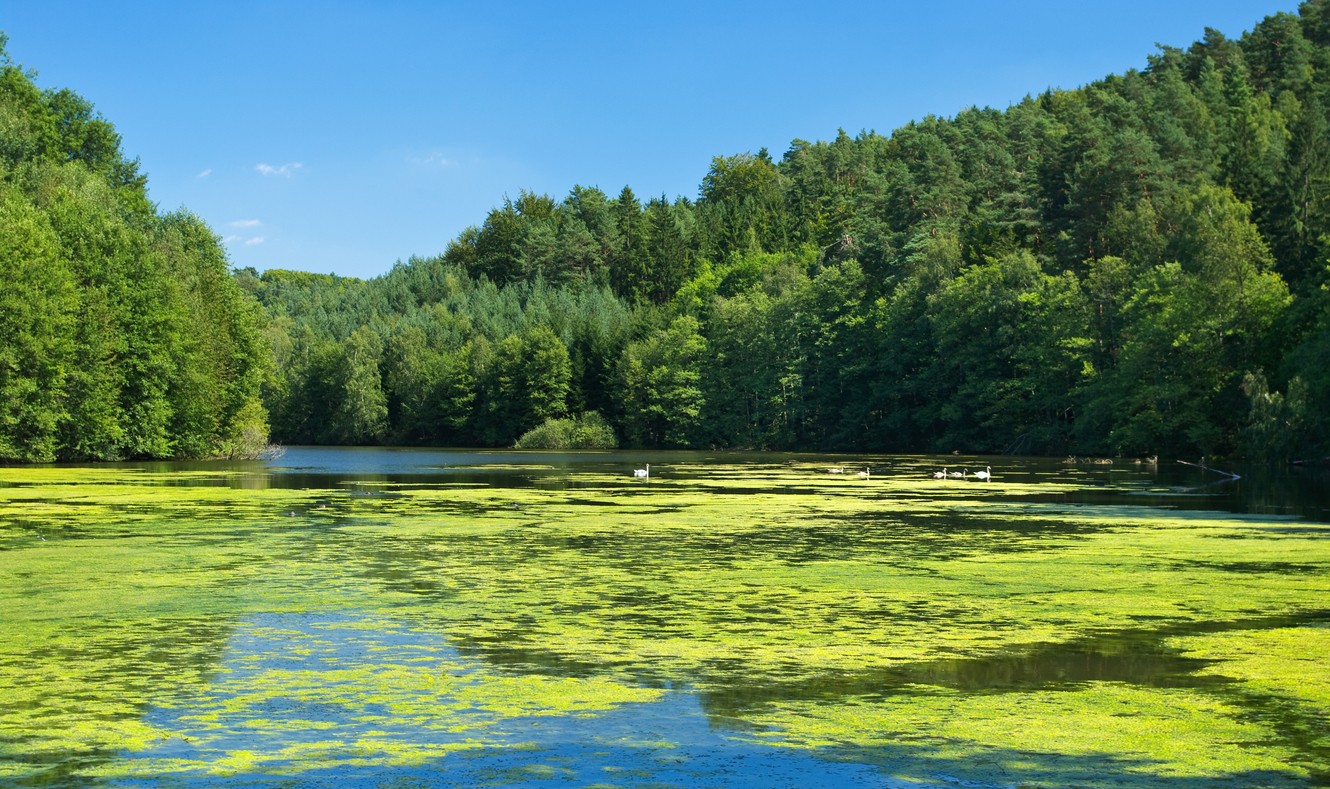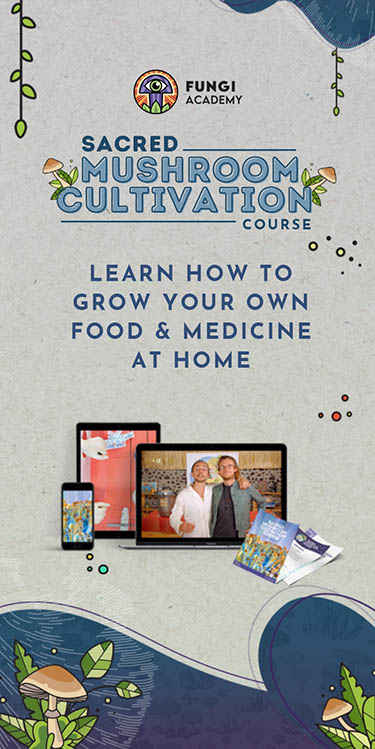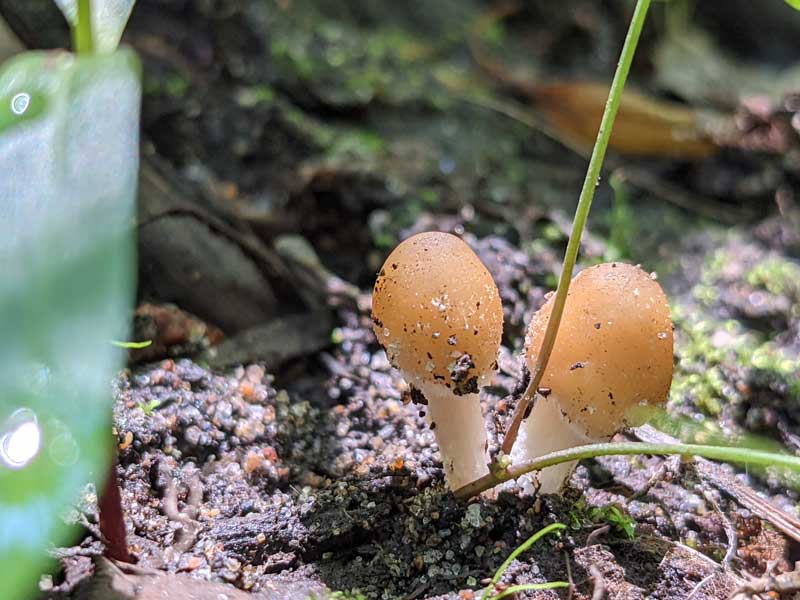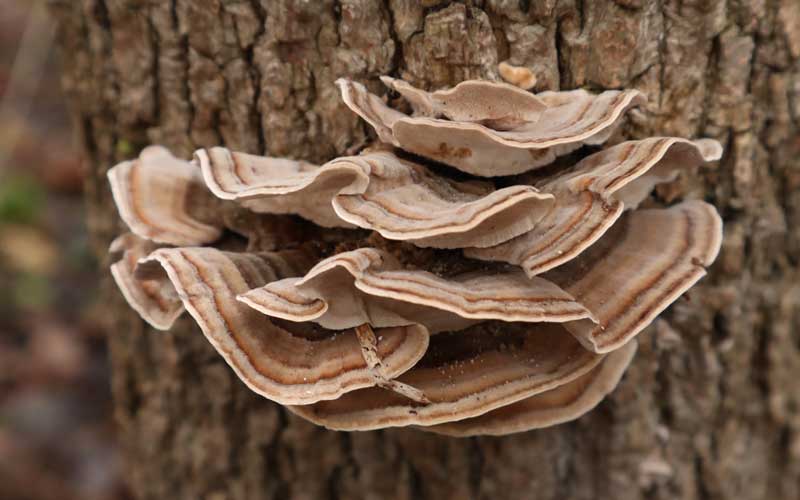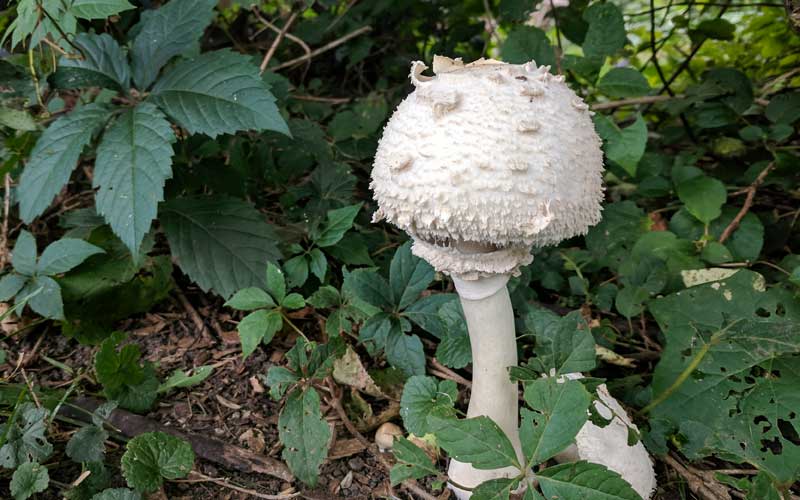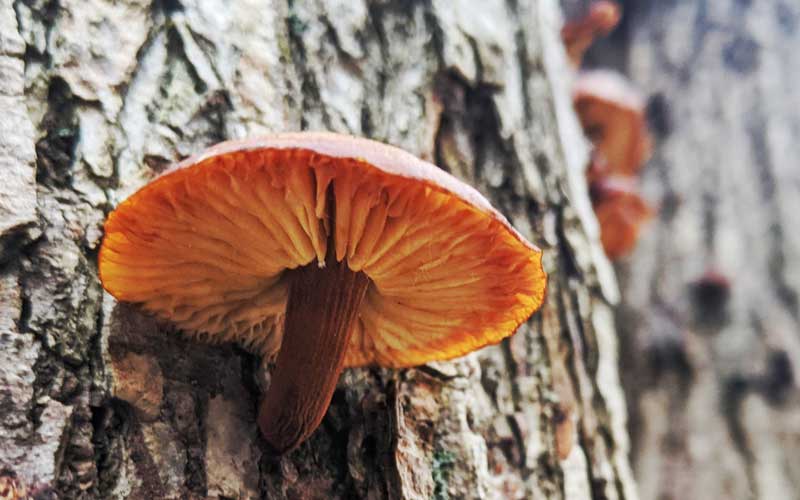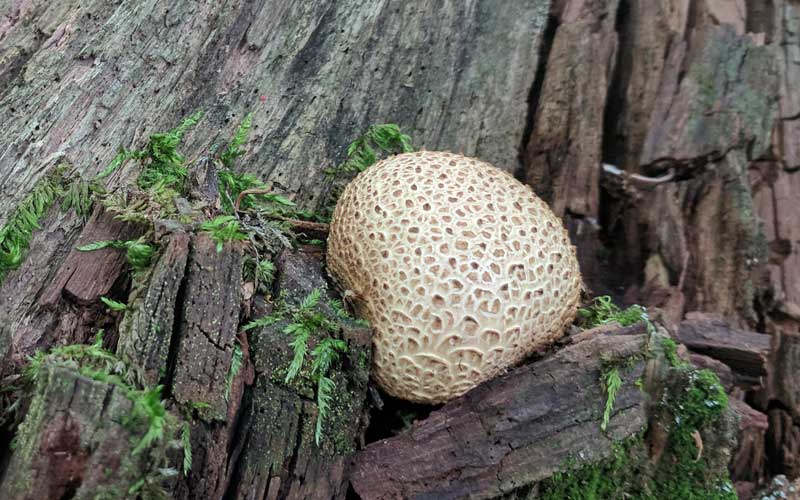- Home
- Mycelium Intro
Mushroom mycelium… the underground network that connects and supports all life.
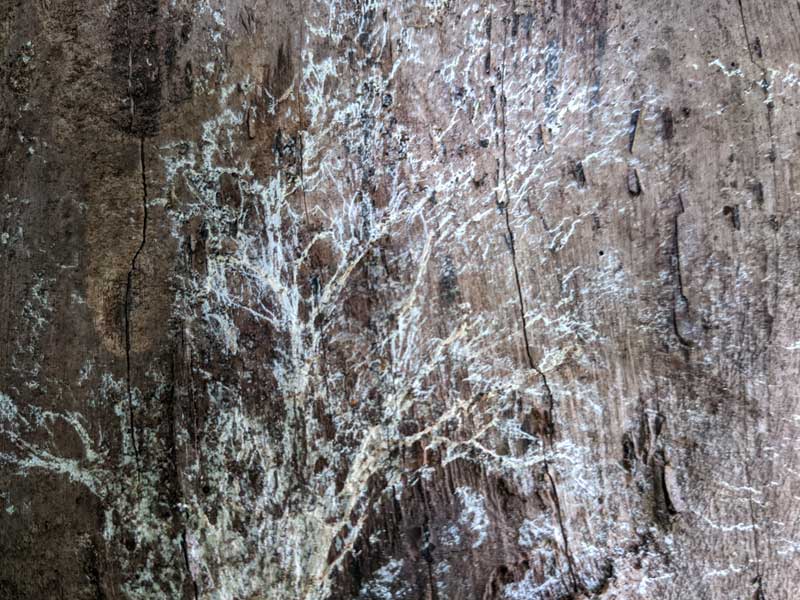 Threads of mycelium spreading across the surface of a dead or dying tree, where the bark has fallen away.
Threads of mycelium spreading across the surface of a dead or dying tree, where the bark has fallen away.When we see mushrooms in nature, we witness forms and shapes that are very different from the everyday button mushroom of picture books.
And honestly, mushrooms look strange at the best of times. Not like any plants we know. No leaves or flowers. No seeds even.
It’s as if they’re from an oddly alien kingdom, with their caps, smooth skins and spores.
But things get stranger.
Mushrooms are simply the reproductive structure, or fruiting body of mycelium.
Next time you pick a mushroom from the ground, pause and consider what lies beneath.
And keep in mind that the mushroom represents a very, very small part of the larger organism.
The mushroom is simply the fruit of mycelium.
Mycelium is a vast fungal network that is woven through the soil under every step we take.
And underneath each step – almost anywhere in the world you walk - there are up to 300 miles of fungal mycelium.
What does mycelium look like? On a wet day in the fall, if you pick up a layer of wet leaves, or move a fallen, rotting branch, you might see a web of white or almost white threads spreading across the ground. What you’re seeing is mycelium.
It’s everywhere, and these networks can be huge.
In fact, the world’s largest and oldest organism is an unbroken network of mycelium, sometimes referred to as the “Humongous Fungus”.
It’s a living organism that covers almost 4 square miles in the Malheur National Forest in Oregon. It's estimated to be over 8,500 years old!
Mycelium does a great deal more than simply grow and spread.
Mycelium is a worldwide web… but organic and always growing and changing.
It holds soils together and helps aerate them. It actually creates soil by excreting acids and enzymes that break down organic matter and even rock.
Saprophytic mushrooms and their mycelium networks use those acids and enzymes to decompose fallen leaves, plants and trees. Not to mention dead animals, insects and birds. They break everything down into simpler molecules that become part of the broader ecosystem.
Fungi are the world’s primary decomposers. Without them the planet would be overwhelmed with piles of dead organic matter. Imagine if every tree that had ever fallen over the last million years was still there on the ground… fallen but unchanged.
We’d be miles deep in fallen wood.
But fungal mycelium decomposes all the organic detritus on the ground and transforms it into soil.
Mycelium partners with and supports almost all plants and trees.
In addition to being decomposers, woven into the nutrient cycles of the planet, mycelium is also a communications and transport network.
Sounds crazy, but it’s true.
One simple example of this is the extraordinary symbiotic relationship that exists between mycorrhizal fungi and trees.
Mycorrhizal fungi actually penetrate into the walls and cells of a tree’s roots. It does the same with plants.
Now there’s a physical connection between the roots and the mycelial network, valuable exchanges can take place.
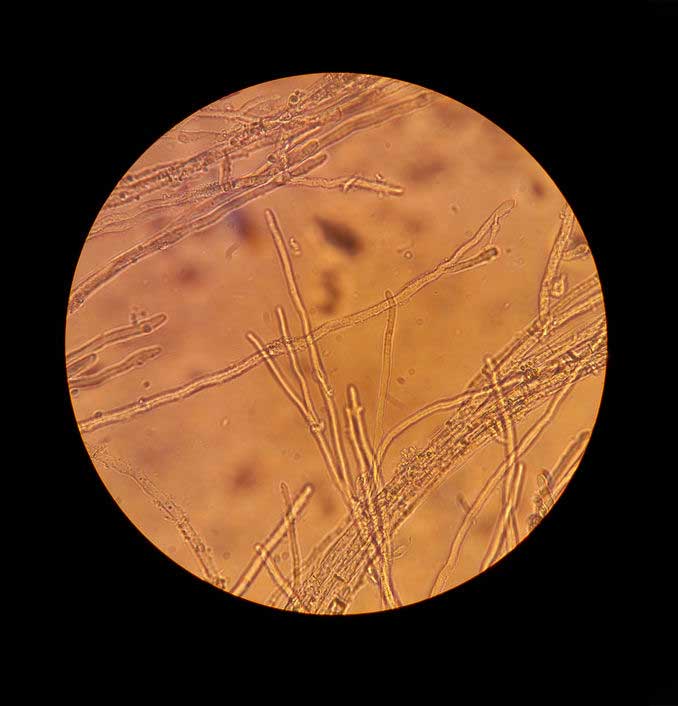 A microscopic view of the thread-like hyphae that make up mycelium.
A microscopic view of the thread-like hyphae that make up mycelium.The mycelium extends far beyond the reach of a single tree’s roots, so it can access minerals and other nutrients that can’t be reached by the tree.
The mycelium passes these nutrients on to the tree.
But it gets something in exchange.
Trees and plants create carbon and sugars through the process of photosynthesis.
Mushrooms and mycelium can’t do that.
So, in exchange for the nutrients the mycelium passes on to the trees, the trees give back their excess carbon and sugars.
It’s an extraordinary relationship.
Mycorrhizal fungi will even create connections between parent trees and their offspring, allowing the “mother tree” to pass on nutrients to the younger trees.
This is just the start of the story of mycelium…
This page just scratches the surface of the story of mycelium and the role it plays in our world.
Keep exploring this site and you’ll learn more about how fungi, mushrooms and mycelium are woven into the fabric of our lives.
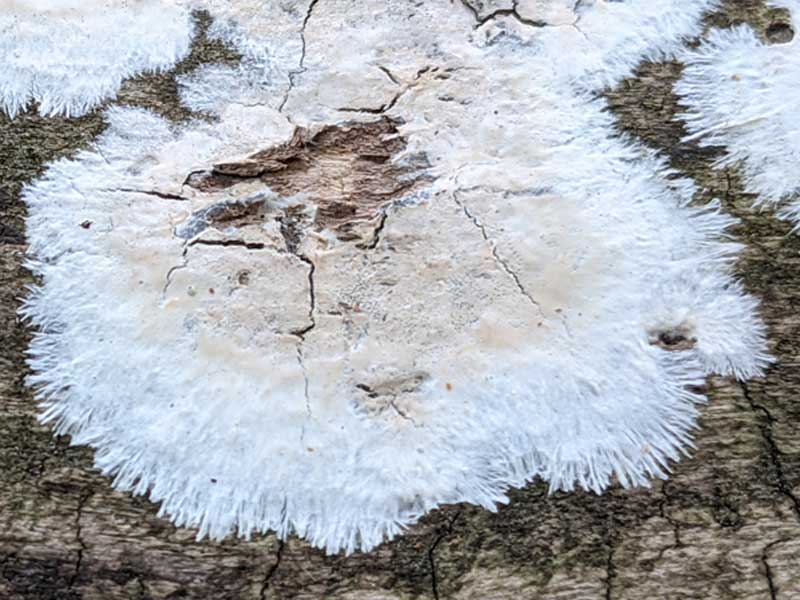 A patch of mycelium on wood, with mycelial threads growing out in every direction in search of food.
A patch of mycelium on wood, with mycelial threads growing out in every direction in search of food.Related Topics:
Mushroom Spores Are One of Nature’s True Marvels
Spores are the microscopic “seeds” of mushrooms and fungi. They are everywhere… even in the air we breath, wherever we are. Read the full article...
Using Mycelium to Make Electronics More Sustainable
It sounds like an almost impossible marriage, but yes, mycelium and electronics are a hot new item. Read the full article...
How fungi and mycelium transformed life on earth.
Follow this deep dive into the early days of fungi on our planet, and their evolution through to the present day. Read the full article...
The Secret Life of Fungi in Your Compost Bin
Compost fans witness the slow breakdown of kitchen and garden waste. But did you know the primary driver of compost are fungi? Read the full article...
Mushrooms and Fungi are Nature's Allies in Combating Climate Change.
In a world threatened by climate change, mushrooms and fungi can help us mitigate the harm through carbon capture and more. Read the full article...
10 Ways Mushroom Mycelium is Being Used in Modern Materials.
While mostly hidden underground, mycelium is now making it possible to create a whole new range of eco-friendly materials. Read the full article...
Fungi’s Growing Role in Sustainable Agriculture.
Industrial agriculture comes at a cost. Fortunately, fungi can help create a more sustainable agricultural future. Read the full article...
Fungi have sex in a variety of interesting and surprising ways.
Their range of reproductive options gives fungi a unique survival advantage. Who knew? Read the full article...
4 Ways mushroom mycelium challenges our definitions of intelligence.
As humans we like to believe only our species is intelligent. Research into fungal mycelium is now challenging that assumption. Read the full article...
How fungi communicate with language based on electrical impulses.
Researchers have uncovered how fungi communicate in a language based on electrical impulses. Read the full article...
Fungi maintain ecological balance in our woods and forests.
Aspen tells us about how mushrooms and fungi help maintain the ecological balance in our world. The full article...
How mushrooms and mycoforestry improve forest health.
Mycoforestry is the strategy of using mycorrhizal fungi to help damaged ecosystems—big or small—recover faster. The full article...
Mycelium is the secret ingredient in healthy garden soil.
Mycelium holds everything together in the soil of a healthy garden. Without the mycelium, the health of all your plants and trees will suffer. More here...
Mycoremediation can help clean up large areas of polluted land and waters.
Mycoremediation is the use of fungal mycelium to help clean up oil spills, toxic soil at old industrial sites, and polluted waterways. Read the full article...
Using fungi to combat and prevent algae blooms.
Algae blooms harm aquatic life and local economies. Fungi might hold the key to preventing them through mycorestoration. Find out how...
